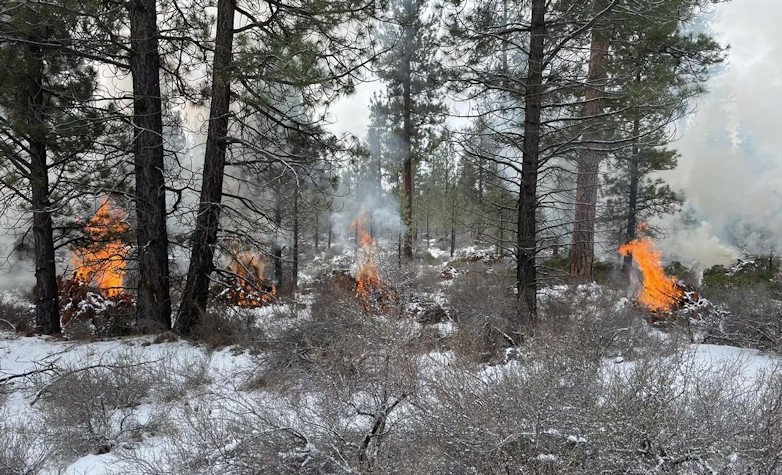Sisters Ranger District crews resume pile burning a mile southwest of Sisters along Edgington Road

SISTERS, Ore. (KTVZ) — Sisters Ranger District firefighters resumed ignition of landing piles Wednesday a mile southwest of Sisters along Edgington Road, the Deschutes National Forest reported.
Smoke may be visible from Sisters and the surrounding area. Residents are encouraged to keep doors and windows closed to help decrease smoke impacts.
Firefighters select pile burning units for ignition based on moisture levels, forecasted weather and conditions predicted to move smoke away from communities where possible. Piles may smolder, burn, and produce smoke for several days after ignition. Firefighters monitor piles until they declare the piles out. Please do not report ignitions.
Landing piles are concentrations of woody debris, like limbs and branches, remaining after forest restoration activities such as thinning and mastication. The leftover material can’t be made into usable forest products. Landing piles are typically constructed using machinery, making them larger in size than hand piles, which are stacked by hand.
Burning these piles of debris in the winter reduces fuels loading in these areas which reduces the risk of wildfire and prepares these areas to receive low intensity fire through the application of prescribed burning.
What does this mean for you?
The possibility exists for smoke to settle in low-lying areas due to cool night-time temperatures.
- When driving in smoky areas, drivers should slow down and turn on headlights
- If you have heart or lung disease, asthma, or other chronic conditions, ask your doctor about how to protect yourself from smoke
- Go to centraloregonfire.org to learn more about smoke safety and pile burning in Central Oregon
For more information on hazardous fuels reduction projects in Central Oregon, visit centraloregonfire.org/ or fs.usda.gov/deschutes and follow us on Twitter @CentralORFire. Text “COFIRE” to 888-777 to receive wildfire and prescribed fire text alerts.
This work is occurring within the Central Oregon Landscape, one of 21 focal landscapes identified within the Forest Service’s Wildfire Crisis Strategy. The implementation of this work supports the Deschutes National Forest’s commitment to addressing the Wildfire Crisis Strategy which aims to reduce severity of wildfires, protect communities, and improve the health and resiliency of fire-dependent forests.